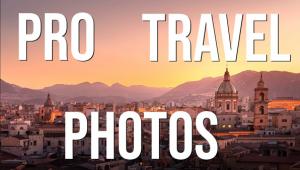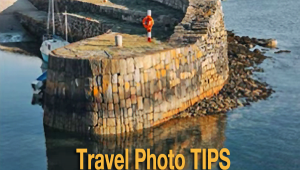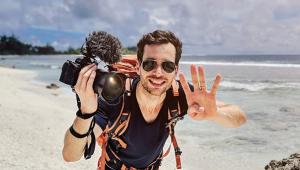The Business Of Travel Photography: Has Stock Killed The Trade? Not So, Say These Pros

Questions about the viability of travel photography as a way to make money are inevitable in my marketing workshops and classes. The allure is undeniable—it seems to be all about exotic places to visit and fascinating people to meet. While lots of photographers want to get into travel photography, it’s also one of the most competitive fields in freelance photography.
To find out some of the ways to market and get a competitive edge, we interviewed four photographers in this field to get their feedback. We talked about stock, assignments, business skills, marketing, pitfalls and opportunities for those looking to get into the field, and, for those who have put their toes in the water, how to add to or improve upon travel photography sales.

Two things became clear as I conducted my interviews and research: first, you must do your homework and specifically target and research what these clients need—otherwise they can just use a stock photo! Second, travel photography includes a wide range of skill sets beyond the photography, including effective writing, preproduction, project management, postproduction, adapting to unexpected situations, and being able to tell the story of a place in your own “voice.”
Special thanks to: Martin Christopher, Martin Christopher Commercial Photography; Neil Koven, Neil Koven Photography; Barbara Kraft, Barbara Kraft Photography; and Scott Lynn Riley, Calderwood Images. Please check the end of this article for web resources on these photographers.

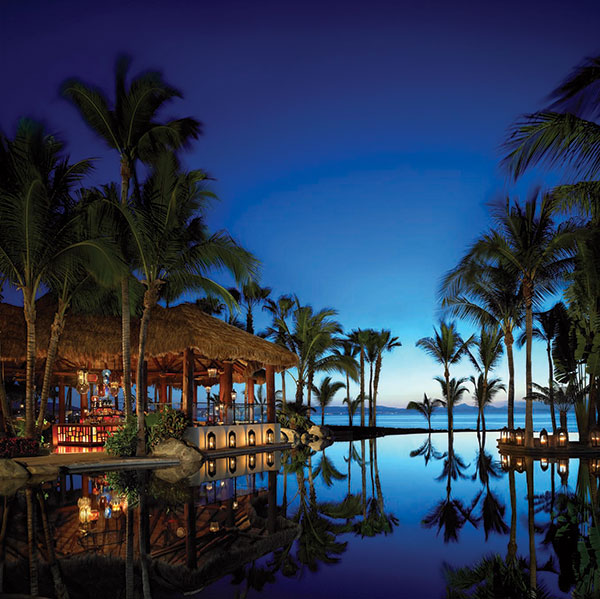
Shutterbug: What proportion of your travel photography is stock vs. assignment?
Neil Koven: I have sold some of my travel photos through a stock agency, but that was serendipitous. One of my first photo assignments was to photograph about 16 hotel exteriors right across Florida in about 45 hours. These were used in a Tour Florida brochure. I also did postproduction work on each of these images, so that the final images looked far superior to the camera images.
Scott Lynn Riley: I handle in-house my own extensive archives of images and writings. Less than 10 percent of my photographs are licensed for stock; they are mainly licensed by large corporations with which I work.
Martin Christopher: I license a very small percentage of my travel photos for stock. Most of my clients either publish the photos one time as part of an editorial or use them to illustrate a company website.
Barbara Kraft: I work mostly with destinations and resorts and get hired to shoot specific shots of the resort. Sometimes the assignment includes shooting the destination and activities outside the property. The goal of those images is to draw the guests to the resort by selling the location by showing activities and scenery that enhance the guest experience. Every hotel is looking for images to entice editors of travel sites and magazines to do a story or, the holy grail, a cover. I love getting covers!


SB: What experiences have you had with travel photography/writing or design assignments?
Scott Lynn Riley: I have decades of assignments and countless travels, photo stories, and writings. I have traveled to around 50 countries with cameras in hand. Over the years my work includes publishing and worldwide corporate branding and promotional work. I have worked with magazines ranging from National Geographic to Vogue Paris to House & Gardens to Condé Nast Traveler and worked on 17 books. Each trip yields its own fresh catch of cultures, people, environments, habitats, arts, and cuisine. Obviously, new realizations and revelations occur at every turn and you will bring back unforgettable experiences everywhere you go.
Neil Koven: Having been a graphic designer as well, I bring a comprehension as to what the end purpose of a particular image is—how best to communicate that idea. This gives me the ability to know just how an image is to fit into the overall communication. Additionally, I have a British-style sense of humor that’s a bit off the wall at times. When I can combine the two, I’m in heaven! I also work best when I know what I’m shooting for. For instance, if I’m shooting for a project to entice people to come to Anaheim, I would probably photograph Disneyland, the roller coaster, shopping areas, the Garden Walk, Angel Stadium, and whatever else would be a tourist attraction…after experiencing them myself. If it’s for the hotels or restaurants, I would shoot these as well. I have been assigned to photograph certain things but include other items as well in order to give an overall perspective and to sell the images to other companies.

SB: What skills or areas of expertise (other than photography) do you think a travel photographer has to develop for a successful business model?
Martin Christopher: To be a successful travel photographer, one must have the skills required for any commercial photography business. First, a travel photographer must understand the requirements and expectations of art buyers in the industry. Next, one must develop and follow an effective marketing plan. Since many photographers have a limited marketing budget, it is important to get the most bang for your buck. This can be a big challenge in our rapidly changing landscape. I recommend a multifaceted approach that includes professional association listings, social media, and a system for keeping in touch with clients through e-mail and printed mailings. Other very important skills include negotiation and knowledge of licensing and copyright. This all gets easier with experience but you can learn much from the resources offered by the American Society of Media Photographers (ASMP).
Besides fundamental business practices, there are a few other skills that are needed to succeed as a travel photographer. There are logistical challenges in getting oneself and one’s equipment from point A to point B and back efficiently and with a minimum amount of wear and tear. I once had an assignment to make 32 environmental portraits in 29 cities in a span of four weeks. This required coordinating flight schedules, car rentals, lodging, and subjects. It was necessary to provide my client with previews and edit many of their selections along the way. This is an extreme example, but suffice it to say that the better you are at traveling, the more successful you will be at travel photography.
The last skill I will mention should probably be placed at the top of the list. I believe that one must develop effective writing skills in order to succeed in any business endeavor. This is important whether writing is one of your freelance offerings or not. Besides the ability to communicate well in written correspondence, one who is practiced at writing tends to articulate clearly and with confidence when speaking in person.
Neil Koven: You need a good sense of design and proportion, being friendly and polite with people and able to laugh with them, a predetermined approach to subject material plus taking images that interest the photographer. And being flexible is important. Good computer skills as well in being able to improve the original camera image—like those I submitted for this article—they stand on their own and also show the diversity of Cuba and what it can offer.
Scott Lynn Riley: The most important skill to have is total knowledge of your subject. The impeccable capability to present the subject in your own vision is supreme. When there is no imitation, your work has an excellent chance to succeed. Secondly, it’s a fine idea to put together a small team to focus on the business side for you.
Barbara Kraft: Solid professionalism is important—say what you do and do what you say and deliver above and beyond and be on time. Bill the client in a timely manner. Also, be careful about buying the newest, greatest, and latest. Will the jobs you use it on pay for it (and still pay you)? My rule of thumb is: does that piece of gear not only earn its keep, does it make you money? Does it make the photography better? Not just is it cool and easier to use. Careful consideration of major equipment purchases is Business 101.
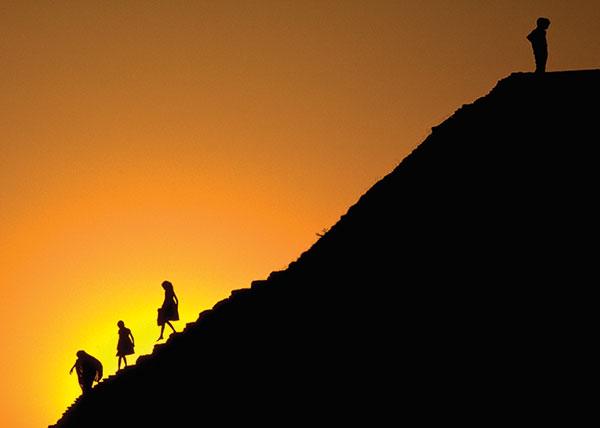
SB: When you are looking at your overall marketing results, what seems to work best for you—using the traditional marketing (direct mail, ads, websites) or newer marketing tools (e-mail blasts, blogs, Facebook, social media) or both?
Scott Lynn Riley: So far, the majority of my marketing is through personal communications with clients, plus my websites.
Neil Koven: I send out marketing newsletters about every six to eight weeks. They are geared to different markets and hence have different images. Because right now I’m doing a lot of real estate work, that is my initial push. The rest of my marketing is repeat business and word of mouth. I do have to turn business away sometimes if I feel I can’t meet unreasonable deadlines or some other factor. I won’t take on a project that I don’t feel I can do a good job with. My website brings in a lot of inquiries as well. So between the newsletters and website, I have as much work as I want or need these days.
Martin Christopher: I find that direct mail and e-mail blasts are a good way to keep clients reminded of my existence, but I’ve never had much luck gaining new clients this way. A fair amount of new business comes to me from people who find my website while performing a search for photographers. This makes it very important that I keep a strong web presence. One of my best sources of new business is my listing on the website for ASMP’s “Find a Photographer.”
Barbara Kraft: I was a great believer in targeted direct marketing. I figured out whom I wanted to work for, did heavy research, and came up with names of individuals. I tried to find out as much about them as possible, if they had won awards, their taste and style. If I did get a call or an e-mail, I was prepared! It’s good to remember that it’s a person who hires you or buys the photos, not the magazine or company.
After gaining a few strong clients a decade ago and making every effort to keep them, I’ve quit direct marketing. Many clients and their representatives have become Facebook, Instagram, and LinkedIn friends and associates. What I’ve learned is to keep all the contacts I have made. The assistants eventually move up and then they are the ones hiring the talent. It’s also good to think outside the travel industry. For instance, if you shoot adventure travel like rock climbing, perhaps a shoe company or clothing brand would like the images.
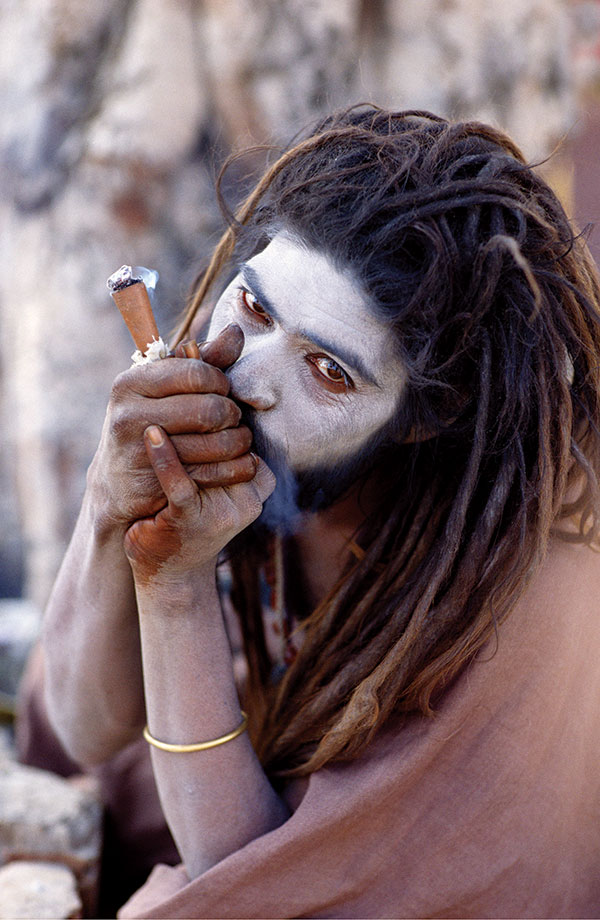
SB: What industry changes have you seen in the last few years for the travel photographer?
Scott Lynn Riley: Unfortunately, subtle, high-quality work (the independent, original, and personal vision and portrayal of subjects) appears to be in decline, whereas easily produced imitative and cliché forms of travel photography have become increasingly common. I sometimes wonder if, in recent years, clients and creators are both beginning to forget what really strong, original, fabulous images are. Travel photography used to be more diverse and alive, and far less redundant.
Barbara Kraft: While there are more and more photographers out there and shooting a good shot is getting easier and easier, creating a great image is hard. Getting these great images, shooting on demand on the day that it’s scheduled, now that can be hard. There is a need for a lot more photos as companies have more opportunities to showcase themselves given the amount of public relations, social media, bloggers, and all the other marketing travel clients can do today.
Martin Christopher: The use of crowd-sourced low-cost images has reduced the projects that in the past were assigned to professional photographers. In order to survive, professional photographers must produce images of creative and technical quality that surpasses those which can be found through low-cost stock banks. I prefer to work for clients who need custom images made with quality standards that exceed the abilities of hobbyists.
SB: What advice do you have for those looking at travel photography—pitfalls to avoid or opportunities to pursue?
Barbara Kraft: Develop a style. Do something that no one else wants to do. I am a trained architectural photographer. Having that specialized equipment and skill is what gets me in the door. My secret weapon is my creative partner, Randy Galligan, the Photoshop Guy. We were delivering composited images before Photoshop had layers and only one image could be on a computer at a time because one image would take up the whole hard drive!
Martin Christopher: My advice to aspiring travel photographers is to gather as much knowledge as possible on the business of photography and develop a disciplined workflow. Develop a protocol and follow it.
Scott Lynn Riley: Scholastic portfolios of travel images mean very little to potential clients. Know exactly what your client is looking for. Try to create a presentation that matches your client’s actual needs and realities.
SB: What “war stories” from your travel photo assignments can you share with our readers?
Scott Lynn Riley: Our work photographing locations all over the world may give us the Herculean powers to catch and record astonishing events at play within incredible places and distant lands, yet can be terrifically hard on personal relationships. Unless you happen to be one of the lucky ones, well-trodden photographers, especially those who commonly picture extremely remote or exotic locations of the world, may find themselves at certain points feeling far away and quite alone.
Barbara Kraft: A client of mine had an idea to shoot on a small sand atoll pretty much in the middle of the Indian Ocean in the Maldives. The closest island was a 30-minute boat ride. This atoll was a crescent of sand that could fit in half a football field at high tide. At low tide it was nonexistent, up to 2 feet below sea level. We were dropped off for a day shoot with models, dining table and chairs set up, waiter, food and drinks, eight people in all. We completed the work, all good, but the boat never came back. The tide was coming up. We put all the gear on the table; the atoll was shrinking fast, the sun set. We were all now standing around the table on a 20-foot round bit of sand getting smaller by the minute. Cell phones were working, luckily, and we got a hold of a resort on an island in the area and they sent out their boat, but that boat couldn’t find us. We literally looked like people standing on the water in the middle of the sea. It was completely dark before we were spotted by our cell phone glows!
This was December 23, 2004. This shoot was originally scheduled for three days later, but we jammed our schedule and completed the assignment so we could all be home for Christmas. A good thing, too, as that would be December 26, the day of the devastating tsunami. The ocean rose 14 feet. We certainly would have been lost at sea.
Most of my war stories involve getting to the jobs. I thought traveling with film back in the day was tough, where you carried a dark bag and had security people opening the boxes and feeling the actual film before and after exposure. It’s still tough if you travel with cameras other than 35mm. We use a carnet document to get equipment in and out of countries. We just have to allow an extra two hours at the airport. Sometimes customs will go though each piece of equipment down to the walkie-talkies, checking every serial number. This takes time.
Martin Christopher: Most war stories can be prevented through careful planning and effective communication. This begins the moment I am contacted for an assignment. Before I agree to an assignment, I make sure I fully understand the client’s needs and the client understands and agrees to my terms. I document this in writing with an assignment confirmation that lists all the details. This prevents misunderstandings and gives me a tool to refer to in any situation that may arise.
Resources
Contributors
Martin Christopher
www.martinchristopher.com
Neil Koven
www.neilkoven.com
www.flickr.com/photos/neilkoven/sets/
Barbara Kraft
www.barbarakraft.com
Scott Lynn Riley, Calderwood Images
www.calderwoodimages.com




